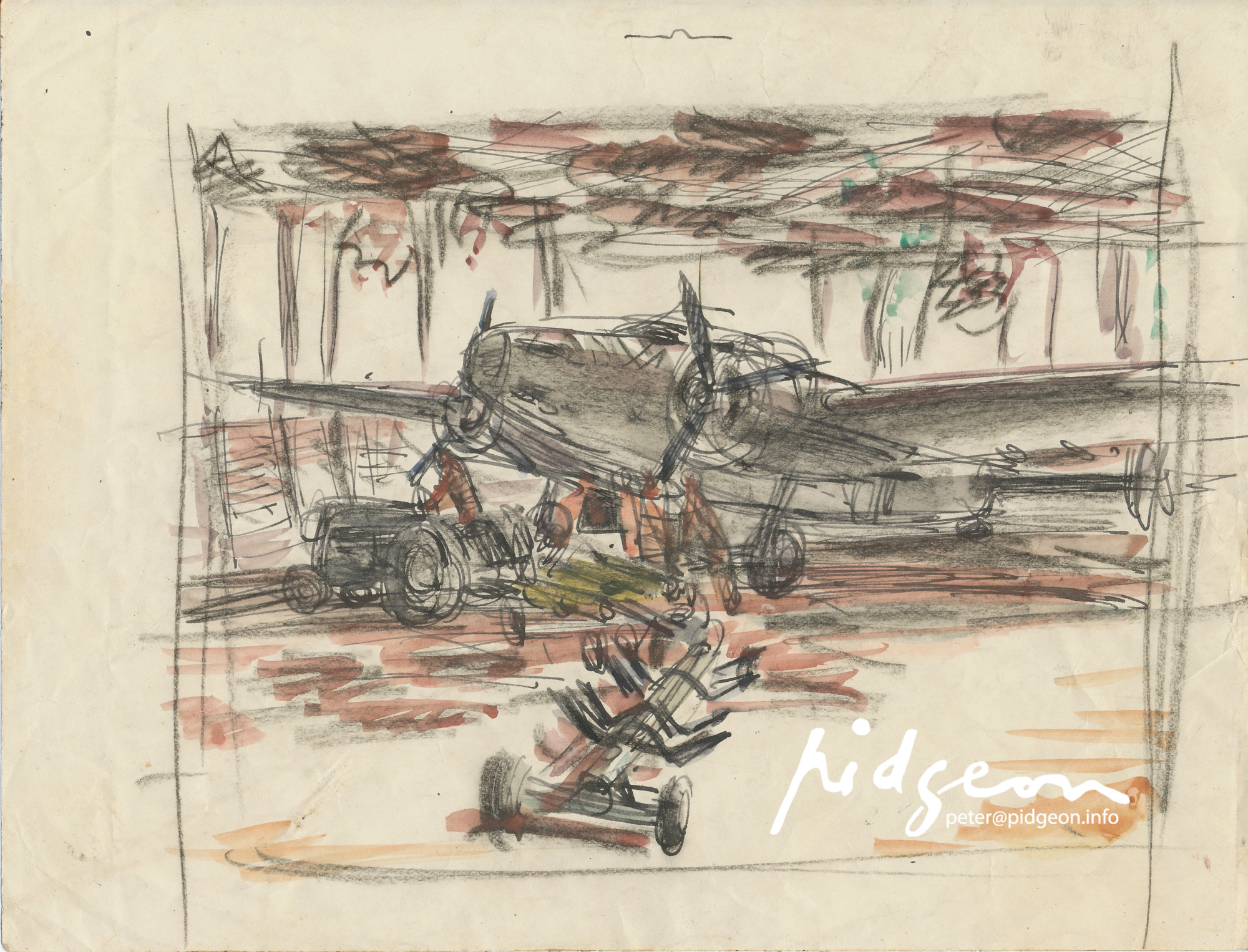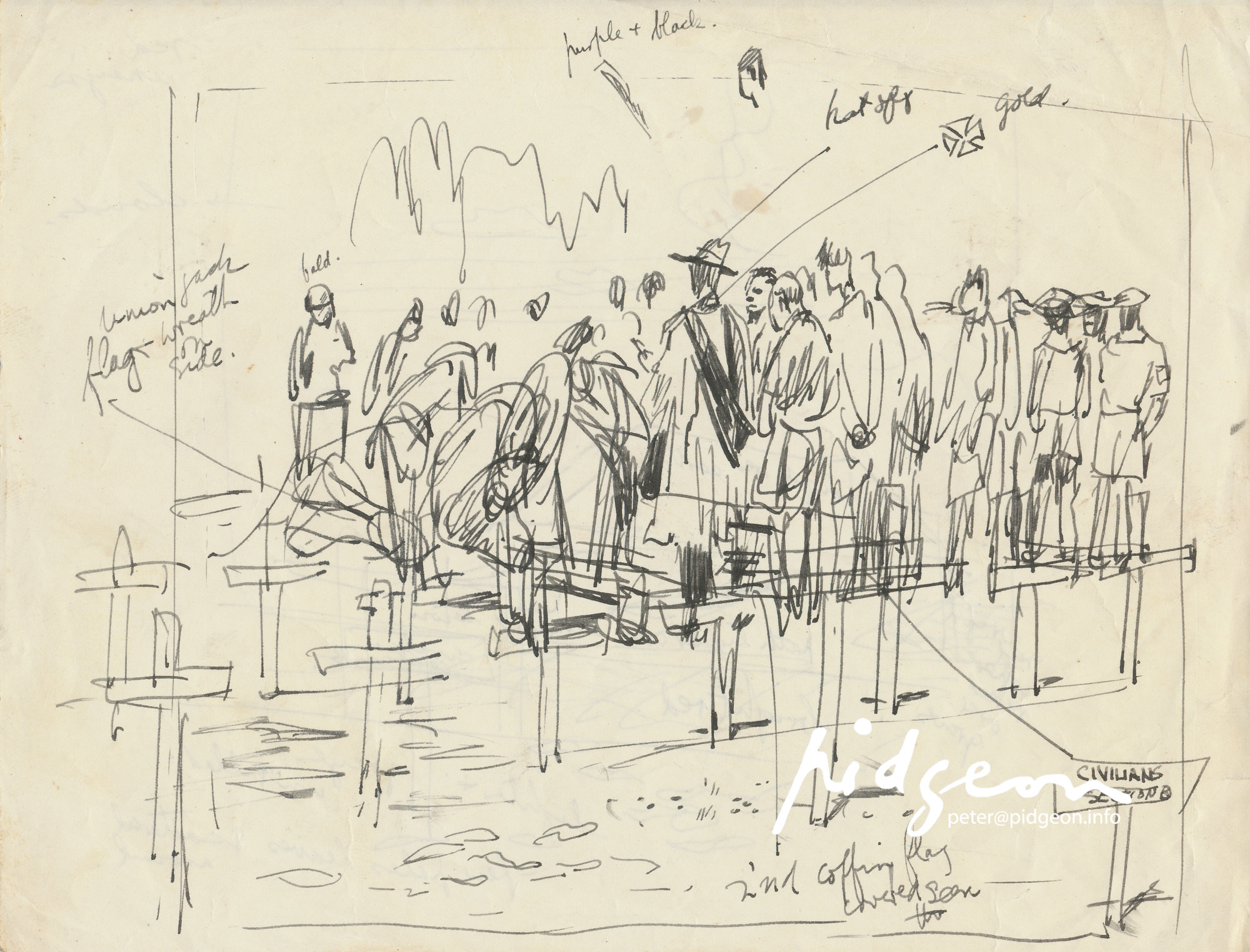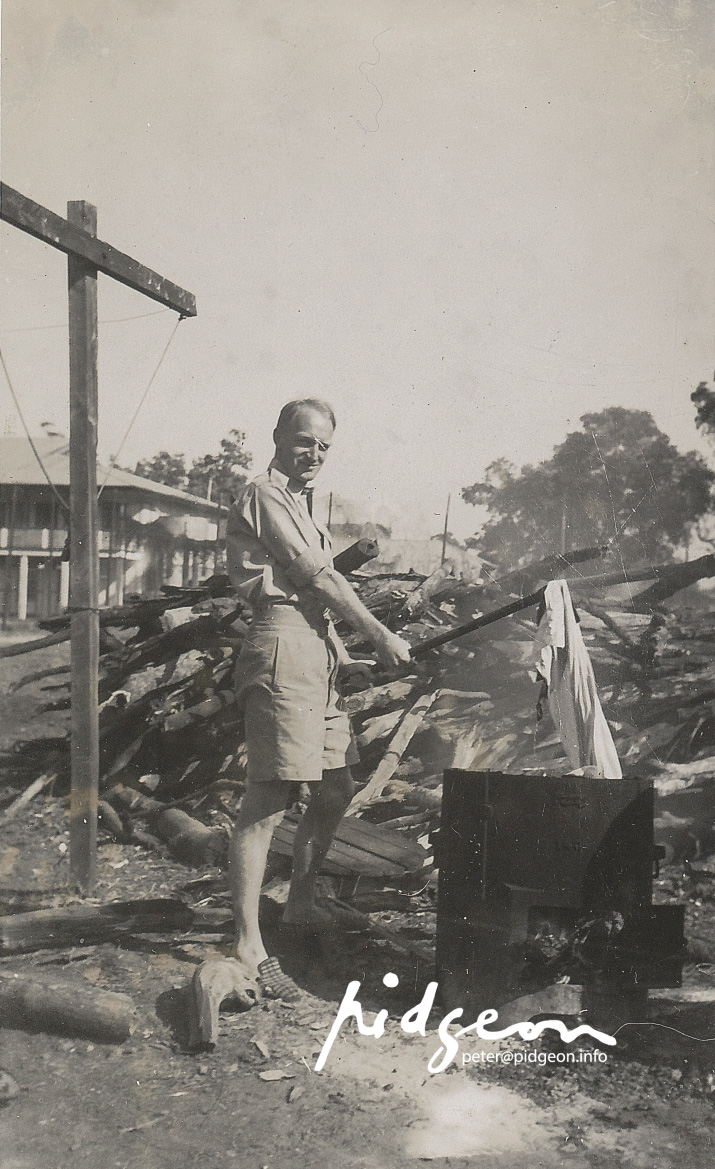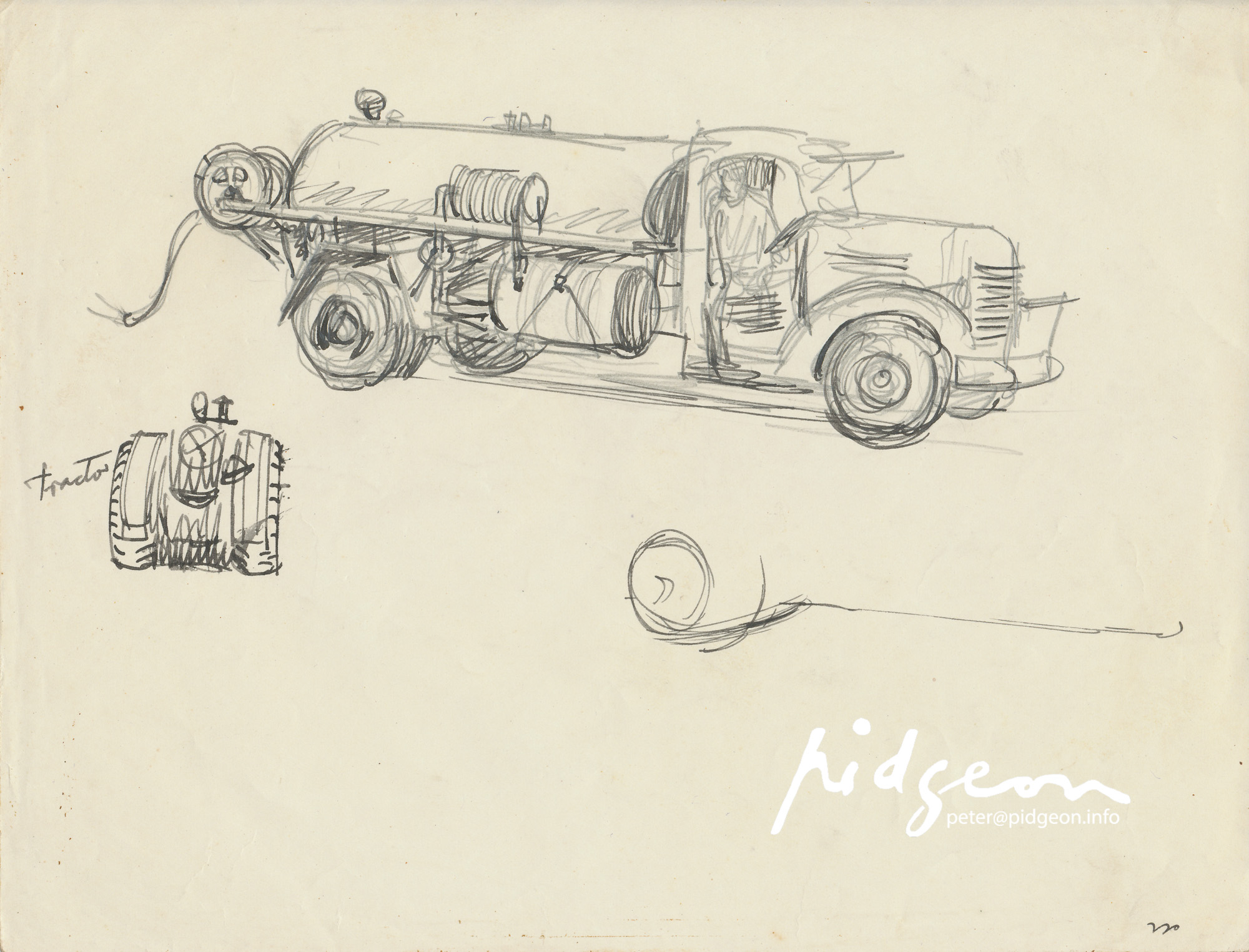W.E.Pidgeon
C/O DPR Unit
APO Darwin
Tuesday 10th
[Aug 1943]
Darling,
Got another letter from you posted the 6th. Thanks sweet you’re doing very well indeed. Sorry you haven’t had any mail for 5 days. I can’t understand that as I don’t think at any time have I gone longer than 2 days without sending you something. Maybe a censor somewhere has tossed one out. Why I wouldn’t know.
Sometimes I get fed up with it here. I think I’ll just clean up a few more things & come home within 3 weeks. To cover everything would take me months. So get ready to receive me right. Am looking forward to seeing you again – it does seem such a long time – doesn’t it?
Wrote 4 letters on Sunday to you, George Finey, King Watson, and the boys at the office. So that’s that. I was quite exhausted after it all.
We have all been washing & ironing today as the batman is sick. Frank Tierney1Frank Tierney was a War Correspondent for The Sydney Morning Herald knows all about the job. I think he must have been a good wife to somebody.

Yesterday I spent with a bomber squadron2RAAF No. 2 Squadron equipped with Lockheed Hudson bombers was based at Hughes Airfield (30 Mile) and managed to get a good set up of the ‘erks’ (as the air force call the ranks who do the hard manual work) loading bombs into a plane.

Sunday afternoon I make a very quick note of a funeral near here. Two of the mercantile marine seamen who were killed when Japs bombed a ship a few days ago off the coast north from here. I think it would make quite a good picture.

[ Note: The funeral services held on 8 August 1943 at the Berrimah War Cemetery were for George Dew and Harold Keller, killed when their vessel, ‘Macumba’ was sunk during a Japanese air attack. This particular scene is of the funeral for George Dew which was conducted by Padre T. Gee, Church of England Chaplain – see also . They were originally buried in the Berrimah War Cemetery on Berrimah Road, southeast of Darwin. After the war the graves were exhumed and relocated to Adelaide River War Cemetery where Dew and Keller were once again placed side by side] The Japanese attack is described by fellow correspondent Frank Tierney, SHIP SUNK BY BOMBS (1943, August 9). The Sydney Morning Herald (NSW : 1842 – 1954), p. 4.
Made a quick water colour sketch of one of the bombed houses here. Water colors are hellishly awkward to manage out of doors. The colour dries on the box before you can get it onto the paper.

Am dashing this letter off because I’m going up the road a little way to finish off a painting of a swimming pool I started some time ago. As the mail will go before I return I am in haste to express my adoration.

You must be stopping a packet of cold weather down there. The “Army News” (local paper) mentions it nearly every day.
Yes I am getting sunburnt. Poor old nut had peeled several times and is now sweetly crowned with a tiara of freckles. Borrowed a pair of shorts from the Loot yesterday so hope to lose the lily whiteness of my nether limbs.
It’s a hot day but with extra pleasant cool breeze coming off the sea. The climate here much to be preferred to that down the road where there is a great lack of breeze. The water pipe line feeding Darwin is exposed to the sun and the water from it is incredibly hot where it is tapped into camps alongside it. Almost to hot to shower under. In Darwin you can have a shower any old time night or day & it’s just beaut-o!
Will be off to the pictures tonight to see “Sun Valley Serenade”3Sun Valley Serenade (1941) starring Sonja Henie, John Payne and Glenn Miller and his orchestra. See also Wikipedia again. Be pleasant to see Sonia skiing whilst we swelter & combat the mosquitoes.
Guess I’ll have to be getting along it is now almost 3pm. So put your arms around yourself for me & save me some great big kisses. Lots of love sweetheart – till I see you soon.
I expect to be home for your birthday. Love
Bill.













[ Note: The funeral services held on 8 August 1943 at the Berrimah War Cemetery were for George Dew and Harold Keller, killed when their vessel, ‘Macumba’ was sunk during a Japanese air attack. This particular scene is of the funeral for George Dew which was conducted by Padre T. Gee, Church of England Chaplain – see also . They were originally buried in the Berrimah War Cemetery on Berrimah Road, southeast of Darwin. After the war the graves were exhumed and relocated to Adelaide River War Cemetery where Dew and Keller were once again placed side by side]




Notes:
- 1Frank Tierney was a War Correspondent for The Sydney Morning Herald
- 2RAAF No. 2 Squadron equipped with Lockheed Hudson bombers was based at Hughes Airfield (30 Mile)
- 3Sun Valley Serenade (1941) starring Sonja Henie, John Payne and Glenn Miller and his orchestra. See also Wikipedia




